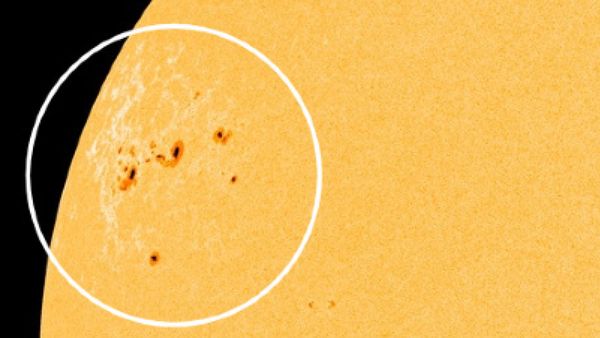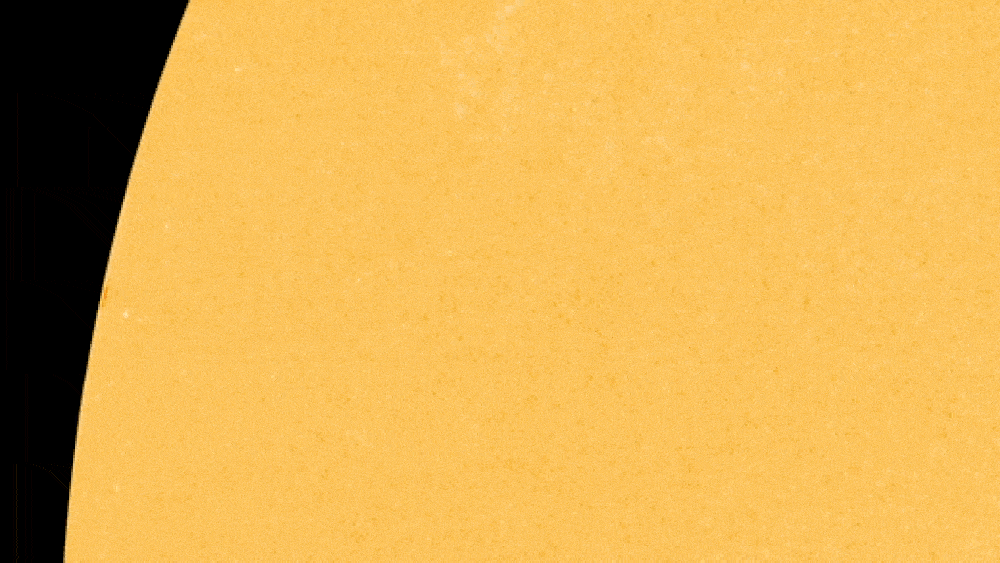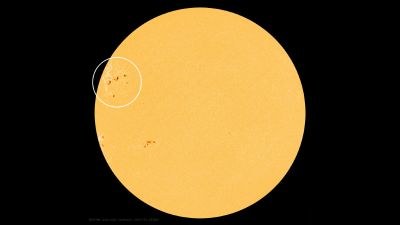'Sunspot archipelago' 15 times wider than Earth could soon bombard us with solar storms
A massive sunspot region made up of at least six different sunspot groups has emerged on the sun's nearside.

One of the largest and most densely populated sunspot regions seen in more than a decade has appeared on the sun's nearside to Earth — and has begun to unleash a barrage of solar storms that are shaking up our home star's surface in a big way. The sunspots' emergence could make it an interesting few weeks for Earth, which will soon be in the firing line of these eruptive dark patches.
The first sunspot group, named AR3490, rotated onto the sun's nearside on Nov. 18 over the star's northeastern shoulder. The dark patch was quickly followed by another sunspot group, AR3491, which trailed in its wake, Spaceweather.com reported.
Scientists already knew that the sunspot groups were on their way because they had been tracking "helioseismic tremors," or ripples in the sun's surface, from the area. The sunspot region is "so large, it is affecting the way the whole sun vibrates," Spaceweather.com representatives wrote.
Since emerging, the sunspot groups have split up and birthed new dark patches, including AR3492, AR3495, AR3496 and AR3497, which has created a "solar archipelago of sunspots," astronomy news site EarthSky reported. In total, the massive collection of sunspots spans around 125,000 miles (200,000 kilometers) across, which is more than 15 times wider than Earth, according to Spaceweather.com.
Related: See the sun's savage surface like never before in new timelapse video
The sunspots have already spat out at least 16 C-class and 3 M-class solar flares — which are the third and second strongest flare classes, respectively — in the last 4 days, according to SpaceWeatherLive.com. And experts are warning that there could be many more of these flares in the next few weeks, as well as potentially X-class flares, the strongest type of solar flare.
The impending flares may also birth coronal mass ejections (CMEs), or enormous blobs of charged solar particles, that could slam into Earth and trigger strong geomagnetic storms, which could cause radio blackouts and spark vibrant aurora displays.
Breaking space news, the latest updates on rocket launches, skywatching events and more!
Astronomers have also spotted several large loops of plasma, known as solar prominences, growing above some of the sunspots in the group. The largest loops tower more than 40,000 miles (64,000 km) above the surface, according to EarthSky, and could snap off and fling into space at any moment, temporarily leaving behind enormous "canyons of fire" in the sun's surface.
At least three sunspot groups have also emerged on the sun's southern hemisphere in the last few days.
The sunspots' emergence is the latest sign that the sun is fast approaching the explosive peak in its roughly 11-year solar cycle, known as the solar maximum, which scientists now predict will begin next year.
During solar maximum, sunspots become much more frequent and increase in size as the sun's magnetic fields get tangled up, allowing the dark patches to grow more easily.
The latest dark patches make up "probably the biggest sunspot region I've seen so far from [the current] solar cycle," Chris Wicklund, a meteorologist and aurora photographer, wrote on X (formerly known as Twitter). "The next 14 days could be very interesting," he added.
This article was originally published on LiveScience.

Harry is a U.K.-based staff writer at Live Science. He studied Marine Biology at the University of Exeter (Penryn campus) and after graduating started his own blog site "Marine Madness," which he continues to run with other ocean enthusiasts. He is also interested in evolution, climate change, robots, space exploration, environmental conservation and anything that's been fossilized. When not at work he can be found watching sci-fi films, playing old Pokemon games or running (probably slower than he'd like).



